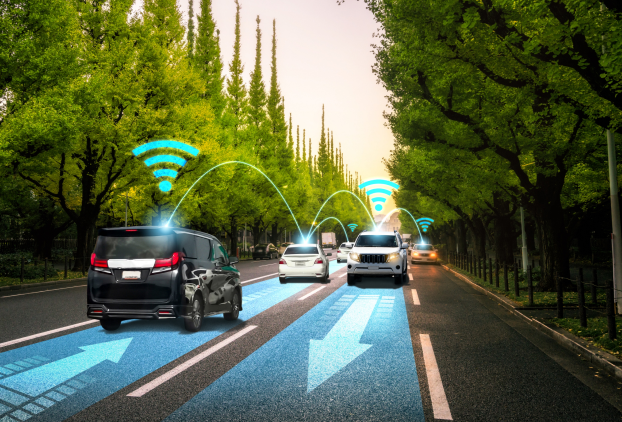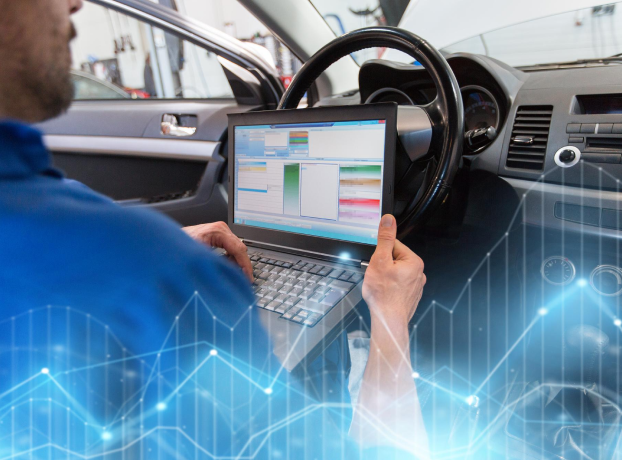Powering Autonomous Vehicles with Accurate Data
Need Automotive industry data? Let’s connect

Humans are naturally able to see, respond, and decide when driving, whether it’s recognizing hazards, figuring out distances, or foreseeing possible dangers. Similarly, automobiles can mimic similar capabilities with amazing accuracy thanks to automotive AI and ML technologies. Vehicles can sense their surroundings, make judgments, and perform at their best thanks to AI-driven systems that use sensors, sophisticated algorithms, and enormous databases.
2B
High Quality annotations delivered
2B
High Quality annotations delivered
2B
High Quality annotations delivered
Driving Innovation in the AI Automotive Industry
Explore our comprehensive data solutions designed to empower the automotive sector—boosting efficiency, enabling smarter technologies, and shaping the future of mobility.

Data Collection for Automotive AI
High-quality data is the foundation of quality AI. The fundamental basis for training AI and ML models in the automotive sector is provided by our data collection services. We gather and verify real-world data from sensors, cameras, and environmental inputs by utilizing the human-in-the-loop technique. This guarantees that systems acquire a thorough awareness of their environment, allowing cars to maneuver, adjust, and operate with unparalleled accuracy—pushing safety and creativity to new heights.
- Sensor Data Collection
- Image & Video Data
- Environmental Data
- In-Vehicle Data
- Edge Case Collection
- Lidar Data Collection
- Autonomous Vehicle Data Collection
- Neuromonitoring Data Collection
Autonomous Data Annotation
Accurately labeled data is the first step towards training autonomous vehicles systems with precision. Our Autonomous vehicles Data Annotation services enable AI and ML models to perform very well in the automotive sector. We guarantee accurate labeling of real-world situations by employing the human-in-the-loop technique, which empowers algorithms to identify patterns, detect things, and make defensible conclusions. Our solutions set the stage for safer, smarter transportation for everything from cars to pedestrians and traffic signs.
- Bounding Box Annotation
- Semantic Segmentation
- 3D Point Cloud Annotation
- Polyline Annotation
- Video Annotation

Key Use Cases of Automotive AI
Supply Chain Management
AI transforms automotive supply chains through cost reduction, delivery time reduction, and logistics optimization. Just-in-time inventory management is guaranteed by predictive analytics, and supplier performance tracking is improved by machine learning. Businesses can minimize interruptions and make data-driven choices using real-time data insights, ensuring that production runs smoothly.
Predictive Maintenance
Predictive maintenance programs driven by AI examine vehicle performance data to foresee problems before they arise. This prolongs the life of automotive assets, lowers maintenance costs, and minimizes downtime. Businesses and drivers benefit from smoother operations and a notable increase in efficiency and dependability when early warning indicators are identified.
Quality Control
AI's automated quality inspections guarantee unmatched precision in the automobile production process. It detects flaws with remarkable precision by examining photos, videos, and sensor data, guaranteeing that only faultless goods are sent into the market. This lowers waste and operational inefficiencies while also improving customer happiness.
AI in Automotive Insurance
AI is revolutionizing vehicle insurance by expediting claims processing, risk assessment, and fraud detection. To give personalized rates, it looks into driving patterns, accident data, and vehicle problems. This strategy guarantees reasonable prices catered to certain drivers. It decreases mistakes and expedites procedures for insurers. It provides policyholders with a more seamless and transparent claims process.
Improved Safety
Roads are becoming safer because to AI-powered systems like ADAS system, which can recognize impediments and anticipate collisions. In order to assist prevent accidents, these technologies provide drivers with real-time alerts. Collisions are actively avoided by features like lane-keeping assistance and emergency braking. They guarantee safer and more reliable travel by improving driver reaction. AI is influencing the future of transportation and saving lives on the roads.
Driver Monitoring
By monitoring driver restlessness and alertness, AI-powered driver monitoring systems improve safety. These devices monitor behavior using cameras and sensors, and they instantly notify users if a motorist appears fatigued or preoccupied. This promotes prompt remedial action, which helps prevent accidents. These technologies increase road safety and save lives by encouraging greater attentiveness.
Why Choose Macgence for Your
Automotive?


 Wide Industrial Coverage
Wide Industrial Coverage
Macgence’s solutions span a wide range of industries, ensuring tailor-made strategies that drive success, no matter your sector.

 Security and Confidentiality
Security and Confidentiality
We prioritize the security and confidentiality of your data, giving you peace of mind while we help you unlock actionable insights.

 Dataset Customization
Dataset Customization
With Macgence, your datasets are fully customizable, empowering you with the precision and relevance your business needs to thrive.

 Exceptional Workflow
Exceptional Workflow
Our streamlined workflow ensures smooth execution, maximizing efficiency and delivering top-notch results every time.

 Affordable Quick Services
Affordable Quick Services
Get high-quality results at lightning speed with Macgence’s affordable and rapid service delivery, ensuring your business stays ahead.
Frequently Asked Questions
1. How do ML and AI support driverless cars?
Autonomous cars can “see” and make judgments on their own thanks to AI and ML, which makes driving safer and more effective. These technologies provide features that enhance the driving experience, including as traffic control, driver assistance, and predictive maintenance.
2. What is the significance of data annotation in autonomous vehicles?
Annotating data aids AI in learning to identify objects such as vehicles, people, and traffic signs. We assist AI in making better judgments by precisely identifying data, which is essential for maintaining the dependability and safety of automobiles.
3. What sort of information is required to train AI in automobiles?
From sensor and camera video to environmental and vehicle data, we collect a wide range of data. This aids AI in comprehending its environment, so vehicles can navigate smoothly and make safe decisions.
4. How does AI improve the safety of driving in self-driving cars?
By identifying barriers and alerting drivers, AI-powered systems such as ADAS help prevent accidents. By averting crashes, features like emergency braking and lane-keeping assistance make everyone safer.
5. What are some actual applications of AI in automobiles?
AI may be used to manage supply chains, expedite insurance claims, keep cars in peak condition with predictive maintenance, and enhance the general safety and caliber of automobiles. It’s making the whole industry more efficient!
We're here to help with
any questions
Get In touch
Maximise Potential with Macgence’s
Data Generation and Collection Services
powering AI projects and driving innovation.
